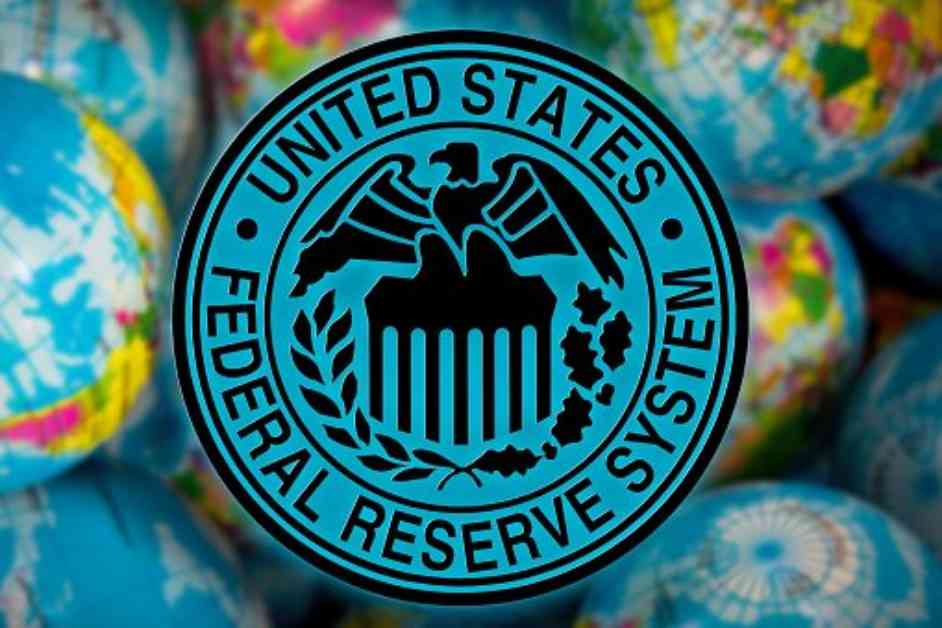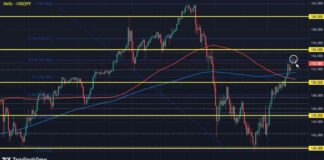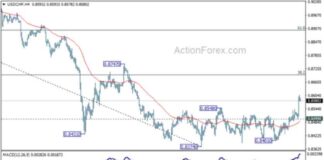The Federal Reserve’s Federal Open Market Committee (FOMC) is gearing up for a highly anticipated decision on interest rates, creating a buzz in the financial markets. The big question on everyone’s mind is whether the Fed will opt for a modest 25 basis points (bps) rate cut or go bold with a 50 bps reduction. The futures markets are currently pricing in a 65% chance of a 50 bps cut, leaving the remaining 35% leaning towards the more conservative 25 bps move. Despite the speculation, many economists predict that the Fed will take a more cautious approach. However, the decision is expected to reveal a divided sentiment within the FOMC, with heated discussions anticipated between the hawks and doves on the committee.
The upcoming FOMC meeting not only holds the key to the size of the rate cut but also offers valuable insights into the Fed’s thought process. In addition to the interest rate decision, markets are eagerly awaiting updates on future rate cut projections, revisions to the closely monitored “dot plot,” and new economic forecasts. These factors combined will present a complex picture for traders to analyze and interpret.
The impact of the Fed’s decision extends beyond interest rates and into various sectors of the financial markets. The performance of the US Dollar is likely to be influenced by overall risk sentiment, while the Japanese Yen may react to changes in US Treasury yields. As investors await the outcome of the FOMC meeting, market participants are closely monitoring these interconnected dynamics for potential opportunities and risks.
Stock market investors are on edge as the S&P 500 index recently flirted with a new intraday record before closing with a minimal gain of 0.03%. From a technical perspective, a decisive break above 5669.67 will confirm the resumption of an uptrend. The next target for the remainder of the year is projected to be at 6086.98, representing a 61.8% increase from the range of 4103.78 to 5669.67. In the event of a pullback, the outlook remains cautiously bullish as long as the support level of 5402.62 holds.
In the bond market, the 10-year yield continues its downward trend from 4.997, currently projecting towards a 100% retracement from 4.997 to 3.785, based on the range from 4.737 at 3.525. While some support may be anticipated at this level, the overall outlook remains bearish as long as the resistance at 3.923 persists. A decisive break below 3.525 could pave the way for further declines towards the next long-term support level at 3.253.
Shifting focus to currency markets, the USD/JPY pair is at a critical juncture near a key long-term Fibonacci support level, the 38.2% retracement of the range from 102.58 (2021 low) to 161.94 at 139.26. A breakthrough above the minor resistance level of 143.03 is expected to confirm a short-term bottoming, potentially leading to a stronger rebound towards the 55-day Exponential Moving Average (EMA) currently situated at 147.71. However, a decisive break below 139.26 could indicate a deeper medium-term correction in progress, with the next near-term target set at 136.82, representing a 61.8% projection of the range from 161.94 to 141.67 from 149.35. The subsequent medium-term target lies at a 61.8% retracement level at 125.25.
Impact on Stocks
The stock market is closely monitoring the Fed’s decision on interest rates, as it has a significant influence on stock prices and investor sentiment. A rate cut is generally viewed positively by investors, as it can stimulate economic growth and boost corporate earnings. Lower interest rates make borrowing cheaper for companies, leading to increased investments and potentially higher stock prices. On the other hand, a rate hike could dampen investor confidence and lead to a sell-off in equities. Therefore, the outcome of the FOMC meeting is expected to have a direct impact on stock market performance in the coming weeks.
Impact on Bonds
The bond market is particularly sensitive to changes in interest rates, as bond prices and yields move inversely. A rate cut by the Fed could lead to an increase in bond prices, as the demand for fixed-income securities rises in a lower interest rate environment. Conversely, a rate hike could result in lower bond prices, as yields move higher to attract investors. Bond investors are closely watching the FOMC meeting for signals on the direction of interest rates, which will ultimately influence bond market dynamics and investment strategies.
Impact on the Dollar
The US Dollar’s performance is closely tied to interest rate decisions by the Federal Reserve. A rate cut typically leads to a weakening of the Dollar, as lower interest rates reduce the returns on Dollar-denominated assets, making them less attractive to foreign investors. Conversely, a rate hike tends to strengthen the Dollar, as higher interest rates increase the returns on Dollar-denominated investments. As the Fed weighs its options on interest rates, currency traders are closely monitoring the Dollar’s movements against other major currencies for potential trading opportunities and risks.

















